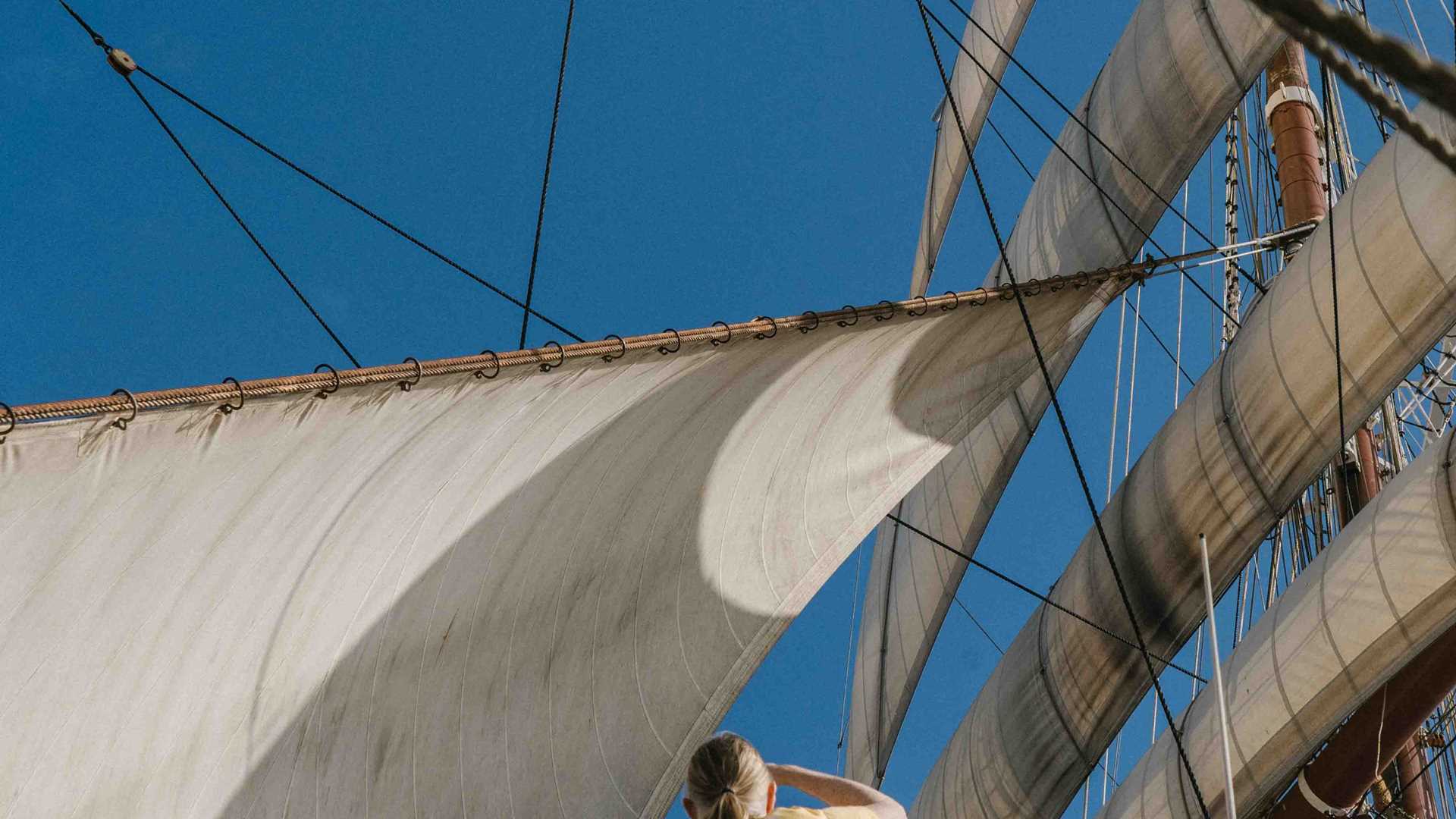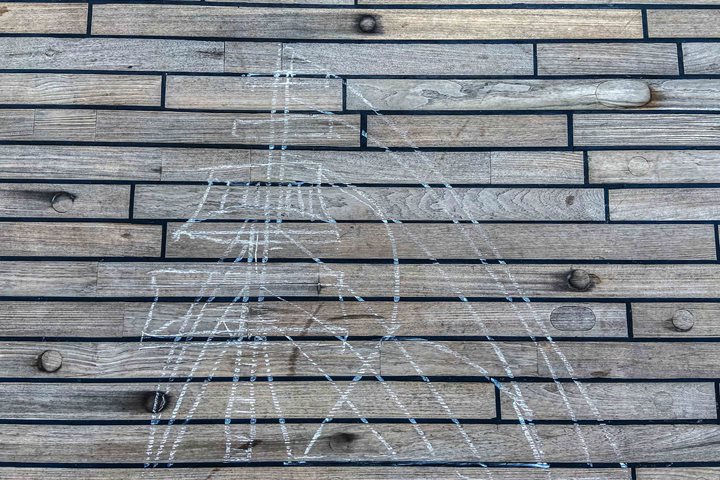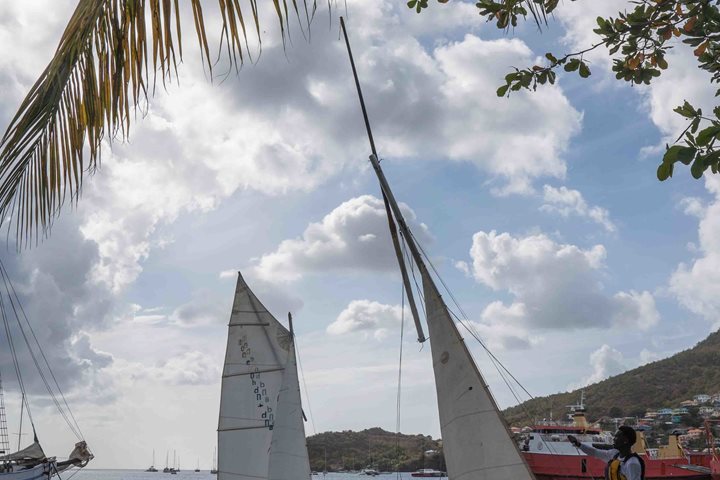We furled sails at 8:45 and shortly were careening along at 8.2 knots. The Captain also furled the highest sail, the sky sail. Imagine 2,600 tons moving at ten miles an hour. In the morning, I led a talk on the Creole languages of the Caribbean.
Sea Cloud sailed into Princess Margaret Bay in Bequia in the afternoon. This small island (7 square miles) hosts a permanent population of 4,800, most of whom are descendants of the Africans, French, and Scots who were brought here in the 17th century. I could see the Hamilton Battery off our port, named after Alexander Hamilton’s father. Hamilton himself was born on the island of Nevis. Our destination was the lovely village of Port Elizabeth.
Bequia was settled first by the Taino and then Island Carib Indians. The first European settlers were the French but then Scots were brought over quite early as indentured servants in considerable numbers in the early 18th century. Like the Europeans, the African population was also brought to work the sugar plantations. They remained here and are now the dominant ethnic group. The demographics of Bequia, with a substantial Euro-American population, are thus unlike many of the other islands we have visited.
The street was ringed with small tables selling all sorts of local handicrafts. On our walk to the boat carvers, some of the guests noticed scrimshaw—work done on bone or ivory typically sourced from whales—being sold. The International Whaling Commission allows the practice for indigenous communities in Bequia who can take up to four humpback whales per year. However, since they hunt in the old way, with hand-thrown harpoons in small open boats, they rarely ever get the quota. The whales supplement the diet of the islanders, who use every part of the animal, including the bones to make scrimshaw.
As we walked the main street, we stopped at the Rasta market. This produce market has a number of Rastafarians who practice organic farming and vegetarianism. At least some of them were practicing Rastas and were happy to discuss their beliefs.
The lovely Anglican Church, built in 1824 and always worth a visit, has a wonderful blue and white interior. It is almost always open and is a real sanctuary. The island likely has at least 10 Christian denominations and the Anglican Church is the largest.
Our final stop was one that’s always a hit—the famous watering hole, Jack’s Bar, right on Princess Margaret Bay and one of the most idyllic spots in all the Caribbean. There we enjoyed all sorts of fruit punches and some, I am told, had rum in them! The water in the bay was just right, neither too cold nor hot, and the color a crystalline coral blue. I swam out about 400 yards and still could easily see the bottom 25 feet below.







